The US Citizenship and Immigration Services (USCIS) Office of Fraud Detection and National Security (FDNS) assess the H1-B program. Below, we discuss what employers should know regarding the FDNS, their assessment program, and the proper ways to respond if an officer from the FDNS conducts a site visit.
- DOL
The DOL (Department of Labor) sets wage and hour standards, is responsible for unemployment benefits, deals with occupational safety, and publishes economic statistics. The DOL also sets standards and requirements for employers hiring immigrants. - TSVVP
The FDNS created the Targeted Site Visit and Verification Program (TSVVP) in 2017 with the goal of “enhancing the integrity of the immigration benefit process.” The program helps the USCIS focus efforts where fraud is more likely to occur. - ASVVP
The FDNS created the Administrative Site Visit and Verification Program (ASVVP) in 2009 to allow unannounced visits (audits) to sites where fraud is suspected, and to verify information provided by employers in visa petitions. These visits are part of the Compliance Review process and help verify that petitioners and beneficiaries comply with rules and regulations.
A Note on Documentation for Employers
The employer is responsible for preparing the support documentation for the Labor Condition Application. Employers must ensure they meet the requirements for all documentation. It must be retained and available in a public inspection file within a single working day after filing the LCA with the DOL. Also, the documentation must be made available to DOL investigators upon request. Employers must know the differences between the types of documentation. The only items in the public inspection file should be those required by the regulations.
Site Visits from the USCIS and FDNS Expanded
It was in early 2014 that the USCIS announced that they would start increasing the inspection of work sites for L-1 employers. The goal of the program was to help prevent fraud from those who were participating in the L-visa programs. The reason for the audit increase at that time was because the Office of the Inspector General discovered that many L-1 petitions were approved without proper regulation. The FDNS was expanded to cover more than just H-1B visas and now includes L-1 and L-2 visas.
Why Might an Employer Be Visited/Audited?
An H-1B audit occurs for a range of reasons. In some cases, it might have resulted from a US embassy referral, an employee complaint, or it could be a random audit. Roughly 80% of audits happen because of complaints from employees. Some of the most common complaints given by employees include problems with back wages, benching, and breaching employment contracts.
Consulate and embassy referrals for audits often happen because there is a suspicion that there is some type of fraud occurring. This accounts for 15% of audits. Some types of fraud investigated include fraudulent work experience, degrees, projects by in-house IT staff, fraudulent letters, or W2s that show the wage paid was lower than the required H-1B wage. The remaining audits stem from the random selection process. Depending on the type of audit, the employer may not receive any type of notification. This is in line with the ASVVP. Note that the USCIS conducts site visits for all religious worker petitioners pre-adjudication.
Who Conducts the Site Visit?
The USCIS administers randomly selected employers. Typically, the Fraud Prevention Unit of the USCIS will visit employers who are believed to be violating immigration regulations and for violating the mandates of the H-1B program.
What Is the Goal of the Site Visit?
Immigration officers have several goals, but the primary one is to complete a compliance review report. To support this goal, immigration offers will:
- Verify all information submitted with the petition, including information in any supporting documents
- Verify that the petitioning organization is not fraudulent
- Review all information on the petitioning organization through public records and available data
- Identify where beneficiaries work
- Take photographs, review documents, and interview personnel to confirm the beneficiary’s:
- Location of work
- Work hours
- Physical workspace
- Duties
- Speak with the beneficiary in person
What Should Employers Do to Prepare for a Site Visit?
Employers must take several steps to prepare for a site visit, as well as during the visit and after the visit has concluded. Before the visit, employers must gather documentation and information that the immigration officer will need. During the visit, employers must be able to provide additional information and documentation requested by the officer. After the visit, employers must provide follow-up information requested by the officer.
What Happens After a Site Visit?
After a site visit, the USCIS will review the compliance review report. If any indications of fraudulent activities or noncompliance are identified, the case will be referred for criminal investigation.


